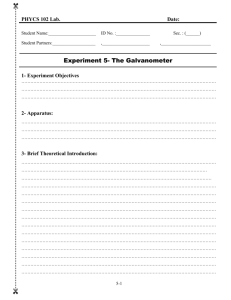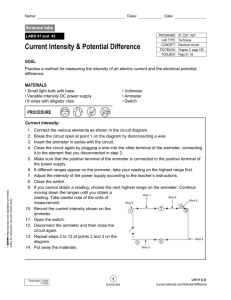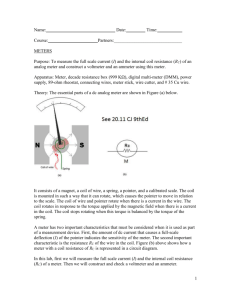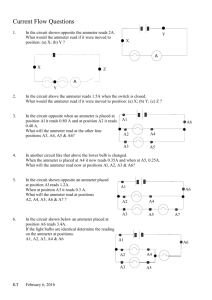Chapter 10 Powerpoint
advertisement
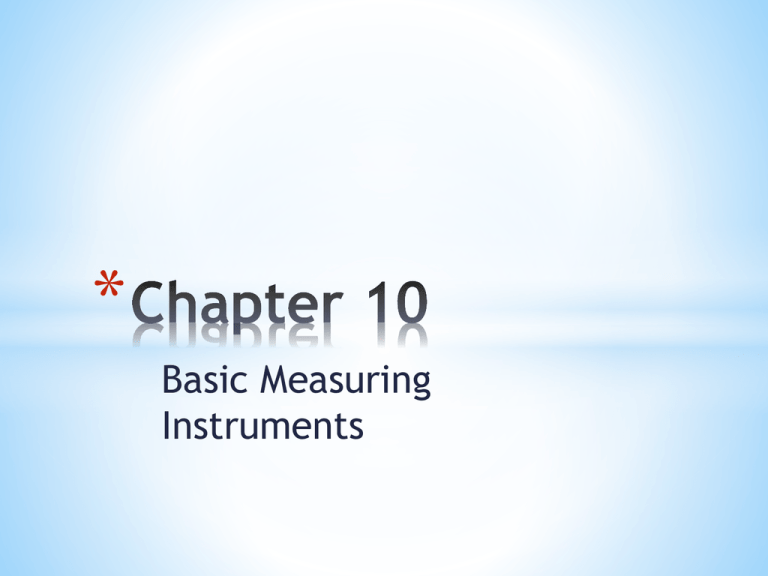
* Basic Measuring Instruments *There are 3 types of instruments we use in 50A: *Ammeter *Voltmeter *Ohmmeter * * *To understand loading effects *To understand a practical use for series and parallel circuits *To what you are doing when you use them * Ammeter * * * Ammeter * * Ammeter * * * Ammeter * * * Ammeter * When you turn the knob to change scales on an ammeter, you are changing the shunt resistor. * * * * * * * * * * * AN IDEAL AMMETER HAS 0 OHMS OF INTERNAL RESISTANCE!! * Since no ammeter is perfect, the result is called loading effects. * http://www.youtube. com/watch?v=lkwh4Z axHIA&feature=email What about Voltmeters? Voltmeter * * * * Voltmeter * Voltmeter * * * Multi-range Voltmeter * * * * * * * * AN IDEAL VOLTMETER HAS ∞ OHMS OF INTERNAL RESISTANCE!! * Since no voltmeter is perfect, the result is called loading effects. Multi-range Voltmeter Voltmeter sensitivity is expressed in ohms/volt (Ω/V). A voltmeter is considered more sensitive if it draws less current from the circuit. The sensitivity of a voltmeter that draws 50uA is the inverse of this, 20,000 ohm per volt. * * * voltmeter sensitivity Multi-range Voltmeter * * Multi-range Voltmeter * * * The internal resistance of our DMM is always 10MΩ no matter range is selected. (That’s because there is no range to select. * 51.3V 95.2kΩ * * * * * * Loading Effects 48.7V What about Ohmmeters? * What about Ohmmeters? * * What about Ohmmeters? Ammeter * *

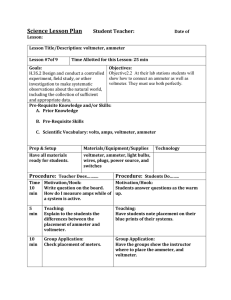
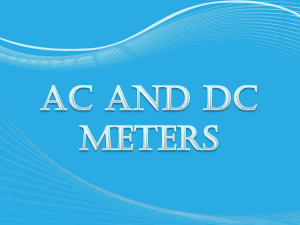
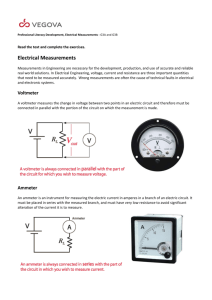
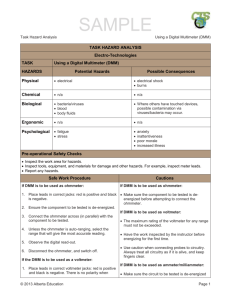
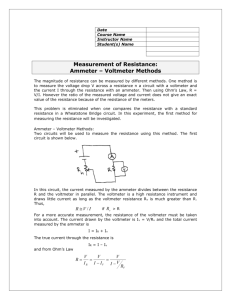
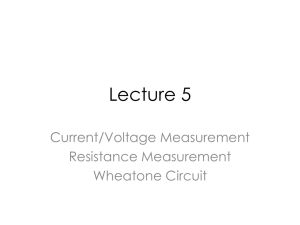
![[11]______ No. of printed pages :04](http://s3.studylib.net/store/data/008230456_1-c7f17f51a590100b54beedcacca16186-300x300.png)
